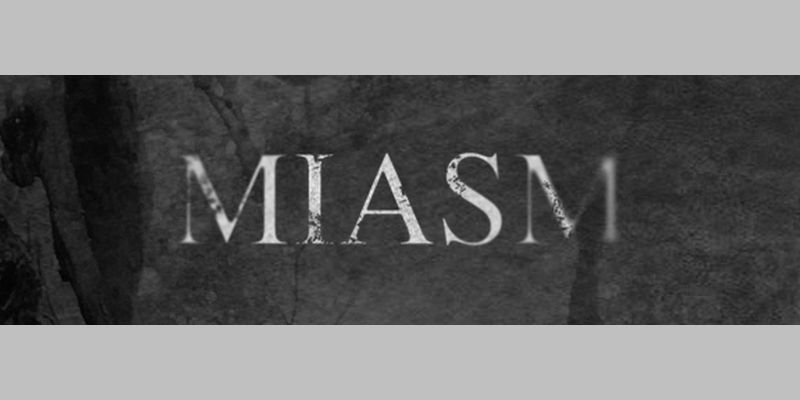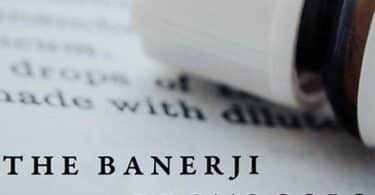Since the Organon Homoeopathic Medical Association Pakistan (OHMAP) started introducing and teaching Sensation Homoeopathy in Pakistan, a number of questions and doubts regarding this method have emerged. Most of the questions are related to Rajan Sankaran’s modern concept of miasms. Certainly, the reason behind this is that homoeopathic literature prior to Sankaran contains some doubts about the theory of miasms. On this account, this concept has neither been accepted nor carried out in practice as an obligatory rule of prescription. I have attempted to answer the questions about the modern concept of miasms in the following article which, I hope, may remove the doubts regarding the modern concept of miasms.
Question 1:
Hahnemann, the founder of Homoeopathy, mentioned three miasms—–Psora, Syphilis and Sycosis. How did Sankaran discover ten miasms? Why did Hahnemann not refer to miasms other than Psora, Syphilis and Sycosis?
Answer:
It is a misunderstanding that Hahnemann had specified only three miasms. He had spoken of Psora, Syphilis and Sycosis in Aphorism No. 78 of the “Organon” and called them chronic miasms which are never eradicated without proper homoeopathic treatment. Before mentioning the chronic miasms, Hahnemann alluded to “Acute Miasms” in aphorism No. 73. While speaking of acute diseases, Hahnemann says:
“sometimes they are peculiar acute miasms which recur in the same manner (hence known by some traditional name), which either attack persons but once in a lifetime, as the smallpox, measles, whooping-cough, the ancient, smooth, bright red scarlet fever of Sydenham, the mumps, etc., or such as recur frequently in pretty much the same manner, the plague of the Levant, the yellow fever of the sea-coast, the Asiatic cholera, etc.”
So, according to Hahnemann, primarily, there are two types of miasms. Type one is “Acute Miasms” which have a specific period of affliction and during this period either the affliction terminates after completing its course or the patient expires. Hahnemann has further sub-divided the “Acute Miasms”. First, the diseases that attack once in a lifetime such as Chicken-pox, Whooping cough, Scarlet Fever and Mumps etc. etc. It is a point to be noted that more diseases can be included in this list. The second type of “Acute Miasms” includes diseases which appear in the form of epidemics such as Plague, Yellow Fever and Asiatic cholera etc.etc. Here, too, Hahnemann has left the provision of more diseases to be included in this list. It signifies that miasms are of two kinds—-Acute and Chronic. As every homoeopath knows, Hahnemann’s “Chronic Miasms” are three—Psora, Syphilis and Sycosis while “Acute Miasms” comprise a long list of diseases such as Chicken pox, Measles, Mumps, Scarlet Fever, Yellow Fever and Asiatic Cholera etc. etc. Therefore it is inappropriate to say that Hahnemann has mentioned only three miasms and that Sankaran, by elaborating ten miasms, has created something unfamiliar in the fundamental philosophy of Homoeopathy.
In homoeopathic literature, discussion of Hahnemann’s three chronic miasms persisted for a long time after Hahnemann. Then Vithoulkas introduced a new miasm named Tubercular. After that, in 1950, Foubister presented another miasm labeled as Cancer and after that, in 1980, Vakil conducted a proving of Leprominun and another miasm Leprosy came under discussion in homoeopathic literature. Thus prior to Sankaran seven miasms were under discussion in our literature.
1: Acute 2: Psora 3: Syphilis 4: Sycosis 5: Tubercular 6: Cancer 7: Leprosy
On what grounds did Hahnemann differentiate Acute and Chronic miasms? As Hahnemann described Acute Miasms under acute diseases, so his definition of acute diseases applies to them.
Aphorism 72
“The diseases to which man is liable are either rapid morbid processes of the abnormally deranged vital force, which have a tendency to finish their course more or less quickly, but always in a moderate time – these are termed acute diseases…………………………….”
According to Organon, Acute Miasms take effect intensely and terminate after completing their course while Chronic Miasms keep penetrating deeper and do not cease without proper homoeopathic treatment. It means that Hahnemann has distinguished the Acute and Chronic miasms on the basis of their “pace and depth”. “Rapid process” denotes the “pace and “finish their course” denotes the “depth” of Acute Miasms. Whereas gradual progression of Chronic Miasms is their “pace” and their everlasting nature is their “depth”.
Following the footprints of Hahnemann, Sankaran started working on the thesis that chronic miasms also can be defined and identified on the basis of “pace and depth” as done in the case of Acute and Chronic miasms by Hahnemann. When Sankaran initiated his studies on these lines he not only succeeded in finding out a distinct and decisive identity of all the pre-existing miasms but also identified three other miasms—Malaria, Typhoid, and Ringworm. Thus Sankaran established a clear cut distinction among ten miasms on the basis of “pace and depth”. This “pace and depth” of a miasm is expressed through the response of a patient which Sankaran calls a coping mechanism. This established identity of miasms can be easily understood and applied in a homoeopath’s practice. In this way, the two hundred years old dilemma about identifying miasms and applying this concept in practice seems to be resolved.
Question 2:
What is fundamental difference between the old theory of miasms and Sankaran’s concept of miasms?
Answer:
The basic difference between the two concepts is that of mode of identification. In the old concept miasm was determined etiologically while according to Sankaran’s concept a miasm is decided on the basis of “pace and depth” expressed through the coping mechanism of a patient in a particular situation. In the old concept, a history of suppressed gonorrheal infection or warts was considered indication of sycosis but we have reservations when many of our cases with gonorrheal history or warts were cured by the use of psoric remedies such as Sulphur or syphilitic remedies such as Mercurius etc. etc. What have the psoric or syphilitic remedies to do with suppressed gonorrhea and warts? When we follow Sankaran, we do not adjudge a patient with gonorrheal history or warts as sycotic but we take note of the patient’s attitude and response i.e. coping mechanism whether it is sycotic or not. Is the patient giving sycotic responses in his malady as well as in other affairs of his life or not? My personal practice stands witness to the fact that a number of my patients with warts were cured with psoric remedies like Sulphur or Nat-m etc. It is probable that a sycotic patient may have warts but it cannot be anticipated that a patient with gonorrheal history or warts must be sycotic. Similarly miasms like Malaria, Typhoid, and Leprosy do not mean Malaria fever, Typhoid fever and the disease of leprosy. In any disease, the decision of miasm will be taken on the grounds of patient’s specific coping mechanism and pace and depth of the disease. It is possible that the miasm of a T.B. patient may be cancer or sycosis, and a patient with Typhoid fever may not have typhoid miasm.
Question 3:
How much is Sankaran’s concept of miasms beneficial in practice? Isn’t the previous literature on miasms adequate? Why is it necessary to understand Sankaran’s concept of miasms?
Answer:
It is imperative to understand Sankaran’s concept of miasms in order to become a proficient homoeopath. In the previous literature on miasms, practically there were two major problems: firstly, to identify the miasm of a patient and secondly, to establish the miasms of remedies. Before Sankaran, Hahnemann and all other renowned physicians attempted to identify a miasm on the basis of the history of miasmatic infection. But from a practical point of view, many pathological expressions and symptoms come under more than one miasm. In this way it becomes difficult to identify a miasm in a patient. Furthermore a history of miasmatic infection in patients is rarely found and if a history of miasmatic infection is present the indicated remedy may belong to some other miasm. When Sankaran identified miasms on the basis of “pace and depth” of the miasms and “coping mechanism” of patients both the problems were resolved.
Sankaran has established only one miasm for each remedy which is very much practicable. Prior to that, a number of miasms were ascribed to every remedy, so it was almost impossible to apply a remedy according to a miasm. For instance Arsenic is syphilitic as well as psoric and acute. Sulphur belongs to all the three miasms as far as the old classification is concerned. Similarly Silicea has also been denoted as a medicine of the three miasms. When we cannot determine the miasm of Sulphur, Thuja, Arsenic, Phosphorus and even important nosodes like Tuberculinumn and Medorrhinum, how can we use the remedies according to the miasmatic concept? Thus, keeping the pace and depth of miasms and coping mechanism of patients in view, Sankaran has devised a new miasmatic classification of remedies. In this classification every remedy comes under one miasm only. In this way the miasm of a patient as well as the miasm of a remedy become distinct and identifiable and miasmatic application of a remedy becomes easy and conclusive.
It is necessary to note that Sankaran’s miasmatic classification of remedies is somewhat different from the old classification. For instance, according to the old classification, Nat-m is recognized as a great psoric remedy but Sankaran labels it as a remedy of the Malarial Miasm. In the old classification, Arsenic was stamped psoric and syphilitic while Sankaran has identified it as a remedy of the Cancer Miasm. Sepia was supposed to be psoric and sycotic but in Sankaran’s system it belongs to the Leprosy Miasm. Phosphorus was said to be psoric and syphilitic but according to the Sensation method it relates to the Tubercular Miasm only and so on.
Briefly, in Sankaran’s system, the miasm of a patient can be identified with full confidence and every remedy has been classified under one miasm only. It is such a great achievement in the history of homeopathy that for the first time Hahnemann’s great discovery of miasms is being confidently utilized in homoeopathic practice.
References:
- Organon of Medicine, Samuel Hahnemann
- The Chronic Diseases, Samuel Hahnemann
- The Sensation in Homoeopathy, Rajan Sankaran
Dr. Mir Zahed
Biography: Dr. Mir Zahed is founder, president of Organon Homoeopathic Medical Association, Pakistan. He qualified DHMS in 1999 and taught Homoeopathic Materia Medica, philosophy, Case Taking and Repertorization at Chiniot Homoeopathic Medical College Chiniot Pakistan for ten years. He is author of Homoeopathic books in different languages;
- Understanding and Utilizing the Homoeopathic Materia Medica (English) Published by B.Jain, India.
- Homoopathie Verstehen Und Anwenden, published from Switzerland.
- Rahnomay Materia Medica (Urdu) Published from Lahore Pakistan
- Case Taking Organon ki roshni mein (Urdu) under print.





A well allobarated, explaining misms articles. Very informative.
An excellent piece; both lucid and cogent!
It clears in one sweep layers of dust settled on the concept of Miasms.
My copious thanks to Dr. Mir Zahed.
This was truly illuminating, especially Sankaran’s concept of one miasm for each remedy. I have recently been treated with Carcinosin and derived much benefit mostly in the emotional/mental area. I am seeking total relief from an allergy triggered adult onset asthmatic condition. So far, I have needed “first aid” remedies to stop attacks. I had taken Arsenic prior to being given Carcinosin and it helped but I now find it works even more effectively. I will continue to work with my homeopathic practitioner, who tends to the Classical side but is open.